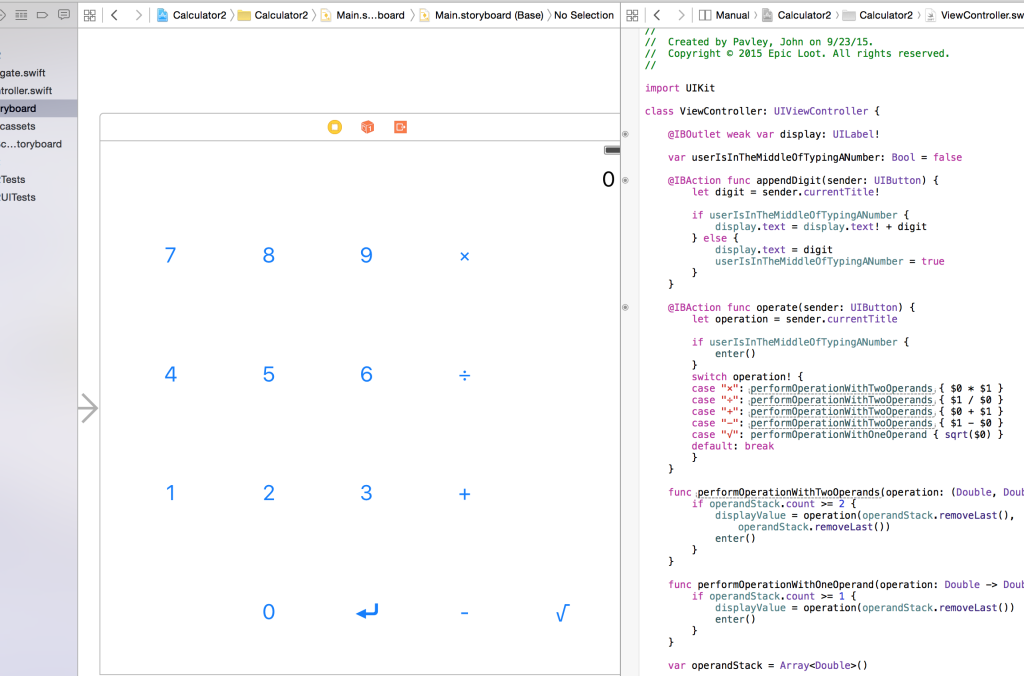
I’m enjoying the Stanford University class CS193P: Developing iOS 8 Applications with Swift. It’s free on iTunes U and the instructor Paul Hegarty knows his stuff. He’s a great explainer. I like how first he writes some code in a naive way and then fools around with it, getting it to work and then reworking it like a sculptor with clay. That’s how real programmers work. We write a rough draft of the code, make sure we understand it and then “refactor” it until we’re no longer embarrassed to share it on GitHub.
But even though the class was recorded in 2014 and updated in June of 2015 it’s aging rapidly. We’re already working with Xcode 7 and iOS 9. And all the little minor changes and improvements are adding up.
One problem you might run into is with the second video: More Xcode and Swift, MVC. In this lesson Professor Hegarty wants to show how we can use a form of polymorphism to write clean code. Specifically with Swift supports something that Objective-C did not! In Swift we can have class functions with the same name but different signatures. In the example in the lesson he shows how we can write two versions of performOperation–one that takes two Doubles as arguments and another that takes only a single Double as an argument. Very cool…
Unfortunately this code no longer compiles.
There is an explanation on Stack Overflow (if you can find it). But it’s not really clear as there are a couple of solutions. Perhaps the best solution, like so much on the human side of computer programming, is a matter of taste.
Here is the code and the fix:
// these functions won't compile with Swift 1.2 and above
func performOperationWith(operation: (Double, Double) -> Double) {
if operandStack.count >= 2 {
displayValue = operation(operandStack.removeLast(), operandStack.removeLast())
enter()
}
}
func performOperationWith(operation: Double -> Double) {
if operandStack.count >= 1 {
displayValue = operation(operandStack.removeLast())
enter()
}
}
// these functions will happily compile
func performOperationWithTwoOperands(operation: (Double, Double) -> Double) {
if operandStack.count >= 2 {
displayValue = operation(operandStack.removeLast(), operandStack.removeLast())
enter()
}
}
func performOperationWithOneOperand(operation: Double -> Double) {
if operandStack.count >= 1 {
displayValue = operation(operandStack.removeLast())
enter()
}
}
Because Swift is smart about classes written in Objective-C that you are subclassing from, it forces those subclasses, in this case UIViewController, to obey Objective-C’s limitations. One of those limitation was not allowing polymorphism for methods with the same name but different arguments.
The code is a little uglier, because there is slightly more of it, but it smart of Apple to be as compatible with Objective-C as possible. At least for a few more years 🙂